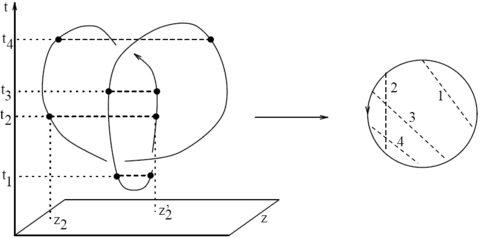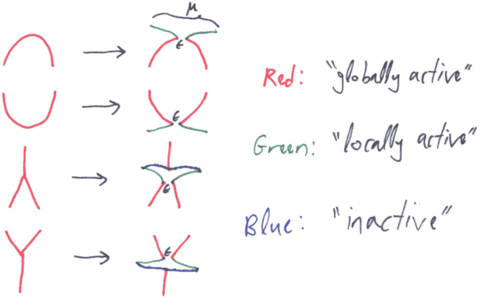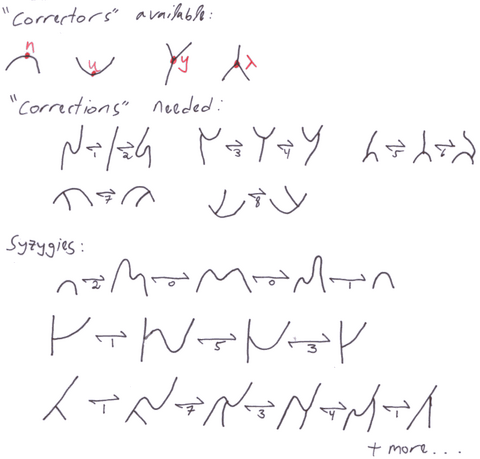The Kontsevich Integral for Knotted Trivalent Graphs
|
The information below is preliminary and cannot be trusted! (v)
Abstract
We construct a (very) well-behaved invariant of knotted trivalent graphs using only the Kontsevich integral, in three steps.
Step 1 - The Naive Kontsevich Integral
We define the "naive Kontsevich integral" of a knotted trivalent graph or a slice thereof as in the "standard" picture above, except generalized to graphs in the obvious manner.
The Good
- It has a factorization property.
- For the "braid-like" factors, it has invariance under horizontal deformations.
- It is morally a universal finite type invariant.
The Bad
- It is divergent.
Step 2 - The Renormalized Kontsevich Integral
After choosing a scale and an infinitesimal and using ideas from renormalization theory as practiced by quantum field theorists, we define the "renormalized Kontsevich integral" of a knotted trivalent graph or a slice thereof as summarized by the picture above.
The Good
- It retains all the good properties of the naive Kontsevich integral.
- It is convergent.
- It is invariant under rigid motions of critical points and trivalent vertices.
- It has sensible behaviour under vertical connect sum, delete and unzip operations.
- It has a sensible behaviour under the changing of the scale , as follows from:
Claim. Let be distinct complex numbers and let be another complex number. Let be the (-strand) braid "rescaling braid" which is the image of the map defined by . Finally, in let be the "sum of all horizontal chords"; . Then up to normalization factors which we are getting right with probability for some small ,
The Bad
- It is not invariant under non-rigid motions of vertices and critical points.
Step 3 - The Corrected Kontsevich Integral
By correcting caps and cups with factors and , and the two types of trivalent vertices with factors and , we define the "corrected Kontsevich integral" of a knotted trivalent graph or a slice thereof. It has all the good properties we can wish for. The details still need to be worked out here!
Aside - The Relationship with Drinfel'd's KZ Associator
The Drinfel'd KZ associator is reproduced already by :











![{\displaystyle [0,1]\to [0,1]\times {\mathbb {C} }^{n}}](https://wikimedia.org/api/rest_v1/media/math/render/svg/b9371dd13f8e28e88a417d0bfcaaa871fb7f84c8)













